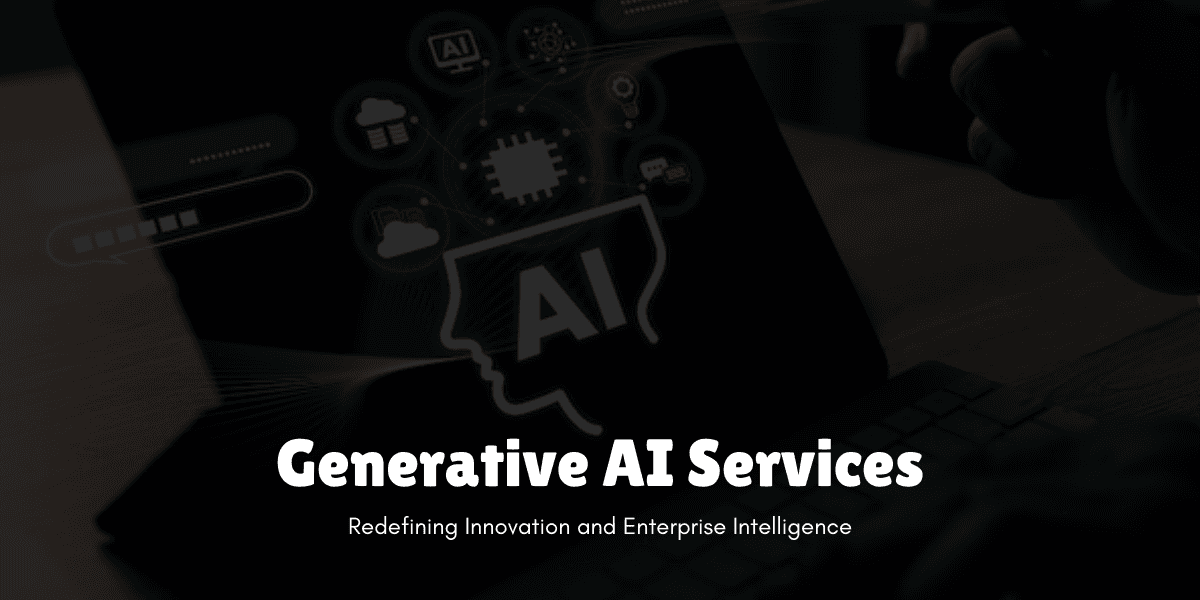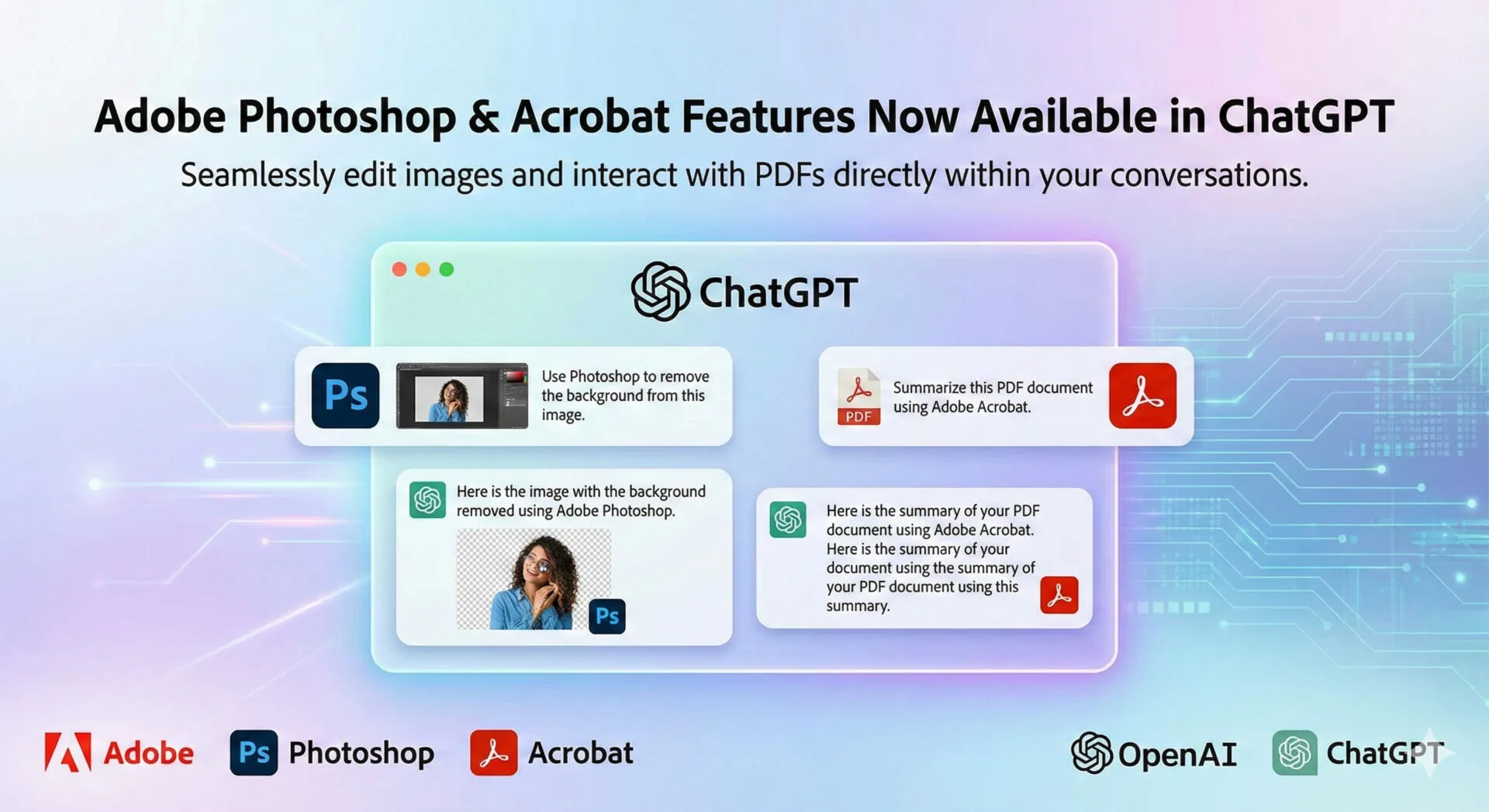Introduction
The advent of Generative AI Services represents a monumental transition in how businesses create, automate, and innovate. Generative AI systems are advanced beyond traditional AI applications that analyze data and extrapolate probabilities of outcomes to develop brand-new content, insights, and solutions. Generative AI plays a transformative role in all business functions and many forms of organizational activity, from marketing campaigns and design prototypes to code generation and personalized customer engagement.
Organizations are exploring this new approach not just as a means of efficiency but as a means for imaginative engagement. Generative AI allows machines to act as creative co-creators—machines that design, draft, and innovate in partnership with human inventors. As organizations strive to position themselves effectively in the marketplace, generative AI technologies provide a mechanism for bridging the gap between human intelligence and machine creativity.
Understanding Generative AI Services
Generative AI Services refer to the building, implementation, and personalization of AI systems that can generate new data or content from existing data or content. These systems rely on advanced models, like Generative Adversarial Networks (GANs), transformer-based models such as GPT and DALL·E, and diffusion models that allow machines to learn and create.
Generative AI services can be utilized to generate synthetic data for machine learning and to perform natural language processing to create content. These services are applicable in various industries, from marketing to healthcare, to retail and manufacturing, and entertainment. Generative AI services focus not just on generating data, but generating value – supporting enterprises in automating repetitive tasks, enhancing creativity, and delivering optimized operations at scale.
Therefore, Generative AI represents a significant shift from analytical intelligence to creative intelligence, allowing companies to reimagine the process of innovation itself.
Why Generative AI Services Are Transforming Enterprises
The greatest value that Generative AI Services bring to the table is in their ability to combine speed, personalization, and intelligence. By producing contextually relevant content and insights, businesses can significantly reduce production time and improve the quality of output.
In advertising, generative AI produces dynamic ad copy to resonate with changes in audience behavior. In manufacturing, it develops prototypes optimized for performance and sustainability improvements. In software development, it auto-generates code snippets that speed up product delivery. Across the board, it means quicker innovation with enhanced accuracy and lowered costs.
Generative AI also enables deeper levels of personalization—creating a unique experience for every customer or stakeholder. Whether that is a chatbot that changes tone to mirror users or a recommendation system that can predict future needs, the technology creates engagement that feels automatic and human.
Core Capabilities of Generative AI Services
Generative AI is comprised of a suite of capabilities—it is not a tool with a singular use case. Here are several key generative AI capabilities to address enterprise use cases:
Text and Content Generation
Generative AI systems are very powerful at generating articles, marketing copy, legal summaries, and other documentation. They can also generate text that accommodates tone, context, and complexity in terms of the intended audience and the intended purpose—saving teams numerous hours of effort while maintaining the quality of their output.
Visual and Design Generation
Generative models (diffusion networks, GANs) support visual and design iteration from product mockups to creative ad visualizations. AI-powered visualization tools also allow creatives to increase their creativity while being assured that their digital design assets remain on-brand.
Code and Workflow Automation
AI-assisted code generation creates efficiencies in the software development lifecycle by accelerating development, enhancing accuracy, and eliminating human errors. Generative models can even assist with suggesting logic flows, writing documentation, and writing test scripts, all of which allow developers to focus on innovative developments rather than repetitive coding.
Synthetic Data Generation
In industries where data is private or scarce, generative AI can produce validation-ready synthetic datasets, which can produce real-world scenarios in a similar sample without exposing sensitive user data from living humans or other valuable data from non-living and consumer artifacts (e.g., autonomous vehicle training, financial services, and healthcare).
Conversational and Multimodal AI
Generative AI enables intelligent assistants that have reasoning, emotion recognition, and/or the ability to generate conversational dialogue. All of which are systems capable of supporting customer interactions, conducting research, and/or automating workflows.
Each of these capabilities contributes to a larger vision: the creation of self-learning systems that continuously evolve with enterprise needs.
Applications Across Industries
Generative AI Services are experiencing rapid growth in a variety of industries and are transforming how organizations view efficiency and innovation.
- Healthcare: Generating synthetic medical data for research, designing molecules for drug discovery, and automating medical report generation.
- Finance: Creating synthetic transaction data to build fraud detection models, automating compliance documentation.
- Retail: Personalizing shopping experiences, creating dynamic product descriptions, and predicting emerging trends.
- Manufacturing: Improving the speed of design through AI-generated 3D prototypes, automating production planning.
- Entertainment and Media: Composing music, writing scripts, creating visual effects, and personalizing content created for the target audience.
- Legal and Professional Services: Drafting contracts, creating summaries, and writing legal templates with large language models reviewed or trained on legal data.
Generative AI’s flexibility ensures that no two implementations will look alike—it molds to the organization’s creative and operational needs.
Advantages of Implementing Generative AI Services
The integration of Generative AI Services offers a multitude of benefits that go beyond automation:
- Boosted Creativity: AI serves as a creative collaborator by generating new ideas and accelerating the brainstorming process.
- Operational Efficiency: Automation of repetitive tasks allows teams to spend more time on thought, innovation, and growth.
- Personalization at Scale: AI systems can create personalized content for each user or client that benefits engagement and loyalty.
- Cost Savings: Automating design documents and data generation results in significantly faster turnaround times and reduced overhead costs.
- Data Security and Compliance: The ability to produce synthetic data reduces any privacy concerns while addressing data protection compliance.
All these areas cumulatively make generative AI a major foundation of next-generation digital transformation strategies.
Strategic Implementation of Generative AI
For companies to harness the full potential of Generative AI Services, a thoughtful application is necessary. The work begins by setting clear objectives for the generative AI services – do you want to enhance creativity, aid in decision making, or scale automation?
Once those are established, the next step is preparing the data and training the model. The quality and diversity of the data used to train the AI system determine the effectiveness of the AI capabilities.
Integration of the system into an existing workflow should be considered with a focus on ease of use and adaptability for the end user to ensure an ongoing collaborative role for employees with AI tools.
An iterative feedback loop progressively shapes the performance of the AI models to be aligned with the entity’s objectives. Organizations that consider Generative AI as a series of evolving capabilities rather than one-off applications will benefit from compounded returns over time.
Challenges and Ethical Considerations
Generative AI is indeed a disruptive innovation, and while it can be powerfully transformative for organizations in the creative and digital industries, it also raises key questions around authenticity, bias, and intellectual property. Companies need to build in transparency, proper attribution, and strong governance frameworks to make sure they don’t misuse AI-generated content.
A further consideration is ensuring control over creative direction. AI should enhance human capabilities—not replace them. As such, establishing a level of human oversight is key to ensuring that AI-generated content meets all organizational values, compliance requirements, and brand attributes.
Ultimately, the key difference between innovation and disruption is how responsibly organizations began putting AI into use. Organizations that prioritize ethics in their approach and use of AI will earn sustained trust and enjoy a competitive advantage.
Future Trends in Generative AI
The next generation of generative AI services will not be limited to content generation—these systems will be capable of reasoning, planning, and undertaking interactions collaboratively and automatically. Agentic AI systems will enable outcomes-based decision-making, allowing the AI to suggest a range of strategies proactively or optimize workflows based on intent instead of instructions.
Generative AI will also continue to become multimodal—infusing text, audio, video, and sensory data to generate experiences. Organizations will leverage these systems for real-time simulations, digital twins, and virtual environments to duplicate the experience of being in a physical space.
As quantum computing and neuromorphic chips mature, generative AI will achieve rapid processing times, making real-time creativity possible. The distinction between human and machine-based innovation will continue to disappear, transforming the landscape towards a new era of collaborative intelligence.
Conclusion: The Creative Intelligence Revolution
Generative AI is more than just a technological advancement; it represents a philosophical change in concepts related to creativity and intelligence. Generative AI Services enable enterprises to deploy tools that think, design, and innovate alongside humans, leading to faster future progress like never before.
The businesses that will win the future are those that will structure themselves around this hybrid structure—those that will use AI not as a replacement for human creativity but as a creative partner in the creative process. Combining precision in data and information with human ingenuity means generative AI stands to create this unprecedented time when ideas become reality faster, smarter, and more intuitively than was ever anticipated.
The era of intelligent creation has begun—and the businesses that take advantage of it today will define the future of business tomorrow.







Leave a Reply